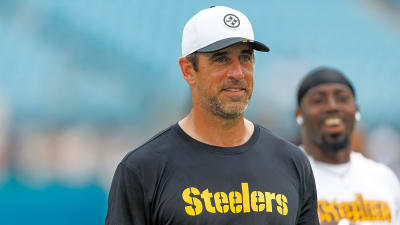I’ll be honest—it’s been so long since I started skating that I can’t fully remember setting up my first complete. But no matter how much time has passed, there’s no denying that setting up a new board is a pretty sacred process for skaters.
I spend a lot of time at my local skate shop, and lately, I've been surprised to see how many kids roll in who are unsure how to set up a board—most even seem a bit hesitant to do it themselves. And it trips me out because setting up a new board is one of the best parts of skateboarding if you ask me. It’s borderline zen. Best chore ever!
With all of that said, I'm sure there are plenty of you out there who don't need to be here learning the process, and that's fine. But if you’re one of those skaters who’s a little reluctant to put your board together, don’t stress—that's why we're here. This quick, easy, and straightforward guide will walk you through everything you need to know. Trust me, once you do it yourself, you’ll be stoked.
Okay, before you start, let's make sure you have everything you need. For starters, make sure you have all the right parts: deck, griptape, wheels, trucks, bearings and hardware.
Additionally, you'll need the right tools: razor blade (to cut the grip), a skate tool and, if possible, a drill or screwdriver, just to make things a little easier.
Just FYI—if you don’t have a skate tool, you can use an adjustable wrench (or rather, wrenches) in the following sizes to get the job done: 3/8 wrench - for the mounting hardware, 1/2 wrench - for the nuts that hold the wheels on the truck; 9/16 wrench - to tighten or loosen the trucks. But honestly, just hit your local shop and get a skate tool! Game-changer. Okay, let's go.
Step 1: Gripping Your Board
Gripping your board can be as challenging as it is rewarding, but it's obviously a total necessity.
As you peel the grip off the paper backing, make sure you don't let the grip bend or get stuck to anything. Once it's off, hold the grip tape from both ends (lengthwise) and carefully place the edge of the grip on one end of the board—either the nose or tail. Make sure it's centered and covering the entire board, especially if dealing with a wider deck.
Let the grip sort of bend in the shape of a "U" as you lay it down, slowly and gently, to make sure it covers the board from nose to tail (or vice-versa). You want to do it lightly in case it's uneven, etc. That way you can just peel it back off the deck if needed. But try to avoid that if possible!
Once it's applied, you'll want to grab a screwdriver and grind down the outline of the board from the top. Grind it nice and strong, as this will make the grip way easier to cut. Once you've done that, take your razor blade and start to cut the grip from under the board (the sticky side), not the top. You'll thank me later. And simply carve off the excess grip around your board.
Save the excess grip, though, and use it to sand down the edges of your board to help the grip from peeling up later on. This part is super satisfying!
Then use a tool to poke out the eight holes for your hardware, and use your blade to pop any potential air bubbles. If you have bubbles, don't worry, you'll get it down in no time. Boom—you've gripped your board!
Step 2: Attach the Trucks to the Gripped Board
Once you have the holes poked, grab your bolts and put them in the eight holes on the top of the board. Flip the board over and place your trucks onto the deck (with the kingpins facing towards each other, this is crucial), and screw the nuts onto the bolts. Get 'em nice and tight!
To do this, you'll hold your skate tool in one hand and your screwdriver/drill in the other and simply tighten them up. (Remember: righty tighty, lefty loosey.) You want the bolts to be flushed with the deck on top. If they're still poking out, you'll want to tighten them a bit more. Good to go? At this point, your new complete should be taking shape! The hardest parts are pretty much over.
Step 3: Insert Bearings and Attach Wheels to Trucks
Before attaching your wheels to your board, you’ll need to put your bearings in your wheels. There are a few ways to do this, but most folks will turn the board primo (on its side) and place one bearing on the truck axle. From there, you'll push the wheel down onto the axle and press the bearing into the wheel. This could be tricky at times, but you'll get it.
Use your strength and press down hard. Once the bearing is in, flip the wheel and repeat this process. Then, do it with the other three wheels.
All the bearings in? Toss them all on the truck axles and tighten the bolts! Make sure they spin, and guess what—you're all done! That was easy, right? Nice work. Your board is built. But first, a little quality control.
Step 4: Make Sure Everything Looks/Feels Good
The first thing you should do is admire the beautiful board you just set up, then pat yourself on the back. You nailed it. See, pretty satisfying, right? Make sure your bearings are spinning and that all your bolts are securely tightened. Then, set it on the ground and feel out your trucks.
New trucks/bushings are always going to feel a little loose. But at the same time, you don't want to tighten them too much right off the bat. Give it some time and roll around a bit. Chances are you'll have to make some adjustments along the way, but again, that's half the fun.
And, well, that's it. Get out there and have some fun!
Share your newfound knowledge with other beginners and walk into the skate shop like a pro. The next time the person behind the counter asks, "Want me to set it up for you?" You can smile and say, "Nope. I got it." Ripper.
More must-reads:
- 49ers complete trade with Commanders for fourth-year RB
- Wild to sign Marco Rossi to multiyear deal
- The 'Second-leading receiver by NFL team' quiz
Breaking News
Trending News
Customize Your Newsletter
 +
+
Get the latest news and rumors, customized to your favorite sports and teams. Emailed daily. Always free!








